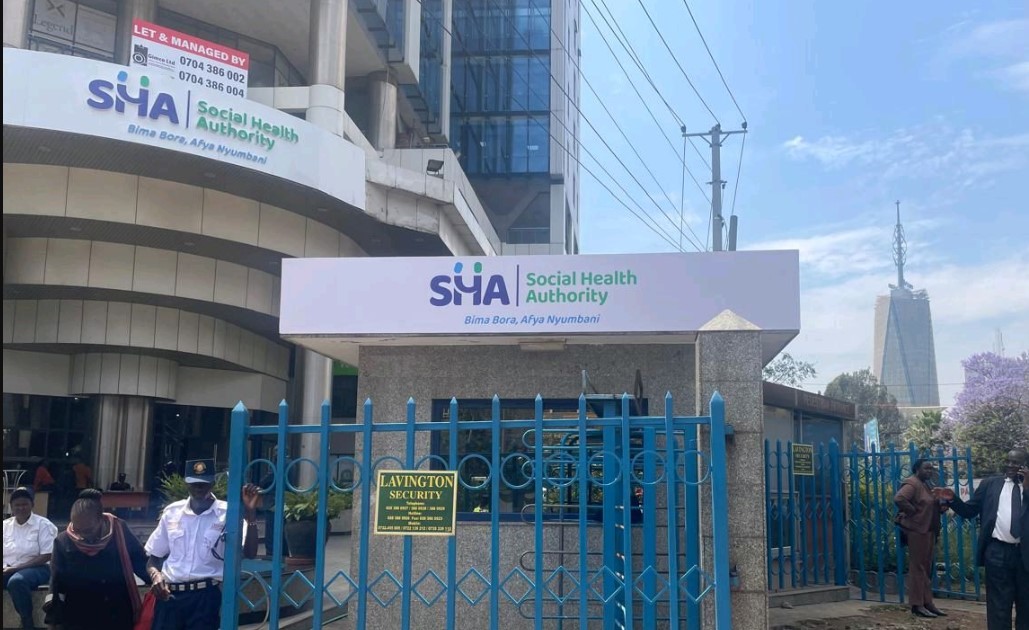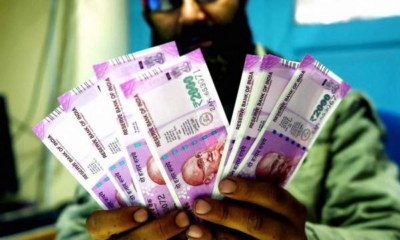Investigations
SHA Breaks Silence Over Fraudulent Payments, Lost Data and Registry Shutdown

The Social Health Authority (SHA) is under fire after allegations of fraudulent payments to ghost health facilities, missing data, and the sudden shutdown of the Kenya Master Health Facility Registry (KMHFR).
Reports suggested billions of shillings had been siphoned through irregular disbursements, leaving Kenyans demanding answers. But SHA has strongly refuted claims that critical payment records were lost or that it intentionally disabled the registry.
The fallout has triggered outrage, with Health Cabinet Secretary Aden Duale vowing to crack down on fraud and restore accountability.

SHA CEO Mercy Mwangangi addressing concerns on the registry shutdown, assuring Kenyans that the system failure was temporary and not a cover-up. [Photo: Courtesy]
SHA Fraudulent Payments and the Fight for Transparency
SHA denied claims that it lost payment records or shut down the registry to hide fraudulent activity. In a statement on Tuesday, August 26, the Authority described the reports as misleading and assured the public of continued transparency.
“This information is inaccurate. SHA remains committed to keeping Kenyans informed and will continue to provide updates,” the statement read.
The registry went offline on Monday, August 25, the same day CS Aden Duale exposed massive fraud within the Authority. The timing raised suspicion, with critics suggesting it was a cover-up to prevent verification of transactions.
The Kenya Master Health Facility Registry holds crucial information about accredited facilities, including their bed capacity, services, and locations. Its sudden inaccessibility left Kenyans unable to confirm which facilities received funds, fueling doubts about SHA’s credibility.
SHA CEO Mercy Mwangangi insisted that the system failure was temporary and not an attempt to obscure financial dealings. She promised that the registry would be restored and that the Authority would cooperate with investigators.
Massive Fraud Uncovered in SHA Operations
On August 25, CS Duale revealed that investigators uncovered shocking practices by some facilities. These included falsification of medical records, inflating bills, converting outpatient visits into inpatient admissions, and billing phantom patients.
According to Duale, health facilities submitted claims worth Ksh82.7 billion under the Social Health Insurance Fund (SHIF). Out of this, Ksh53 billion was paid, Ksh6.4 billion was approved for disbursement, and Ksh10.6 billion was rejected due to fraud and non-compliance.
Facilities under the Primary Healthcare Scheme submitted Ksh9 billion in claims, of which Ksh7.7 billion has already been settled. The rest will be cleared in the next cycle, provided all documentation is verified.
Additionally, Ksh3 billion worth of claims are under re-evaluation due to missing documents, while Ksh2.1 billion is being investigated for possible fraud. Claims worth Ksh7.6 billion for August are still under review.
These figures expose the scale of irregularities rocking the health insurance sector and raise questions about SHA’s internal controls.
Registry Shutdown Raises More Questions than Answers
The disabling of the Kenya Master Health Facility Registry at such a critical moment has only deepened public suspicion. Critics believe it undermines accountability, as the registry is the main tool for verifying hospital accreditation and payments.
For Kenyans, this shutdown translates into uncertainty. Patients, insurers, and even county governments rely on the registry for accurate data on health facilities. By going offline during a fraud scandal, SHA risks being seen as complicit in covering up wrongdoing, whether intentional or not.
Activists have demanded that the registry be restored immediately, arguing that transparency is the only way to rebuild public trust. Opposition leaders have also piled pressure on the government to publish all details of payments, including those flagged for fraud.
The Authority, however, insists it has nothing to hide. SHA’s leadership maintains that investigations are ongoing and that corrective measures will be announced soon.
Conclusion
The SHA fraudulent payments scandal has opened one of the biggest accountability crises in Kenya’s health sector. Billions of shillings are at stake, and Kenyans are demanding truth and transparency.
While SHA continues to deny losing data or disabling the registry deliberately, the coincidence of events paints a troubling picture.
With investigations pointing to widespread fraud, the government faces the challenge of proving that the Social Health Authority can still safeguard public funds. Until then, the fight against corruption in healthcare remains far from won.
Kenya Insights allows guest blogging, if you want to be published on Kenya’s most authoritative and accurate blog, have an expose, news TIPS, story angles, human interest stories, drop us an email on [email protected] or via Telegram
-

 Investigations1 week ago
Investigations1 week agoBillions Stolen, Millions Laundered: How Minnesota’s COVID Fraud Exposed Cracks in Somali Remittance Networks
-

 News1 week ago
News1 week agoUS Moves to Seize Luxury Kenya Properties in Sh39 Billion Covid Fraud Scandal
-

 News1 week ago
News1 week agoMAINGA CLINGS TO POWER: Kenya Railways Boss Defies Tenure Expiry Amid Corruption Storm and Court Battles
-

 Investigations1 week ago
Investigations1 week agoJulius Mwale Throws Contractor Under the Bus in Court Amid Mounting Pressure From Indebted Partners
-

 Americas1 week ago
Americas1 week agoUS Govt Audits Cases Of Somali US Citizens For Potential Denaturalization
-

 Americas3 days ago
Americas3 days agoTrump Says US Needs Greenland For Its National Security
-

 Politics23 hours ago
Politics23 hours agoHow Ruto-Moi Deal Died After Temporary State House Ceasefire
-

 Sports3 days ago
Sports3 days agoThe Easy Way to MSport Ghana: From Login to Your First Bet




















